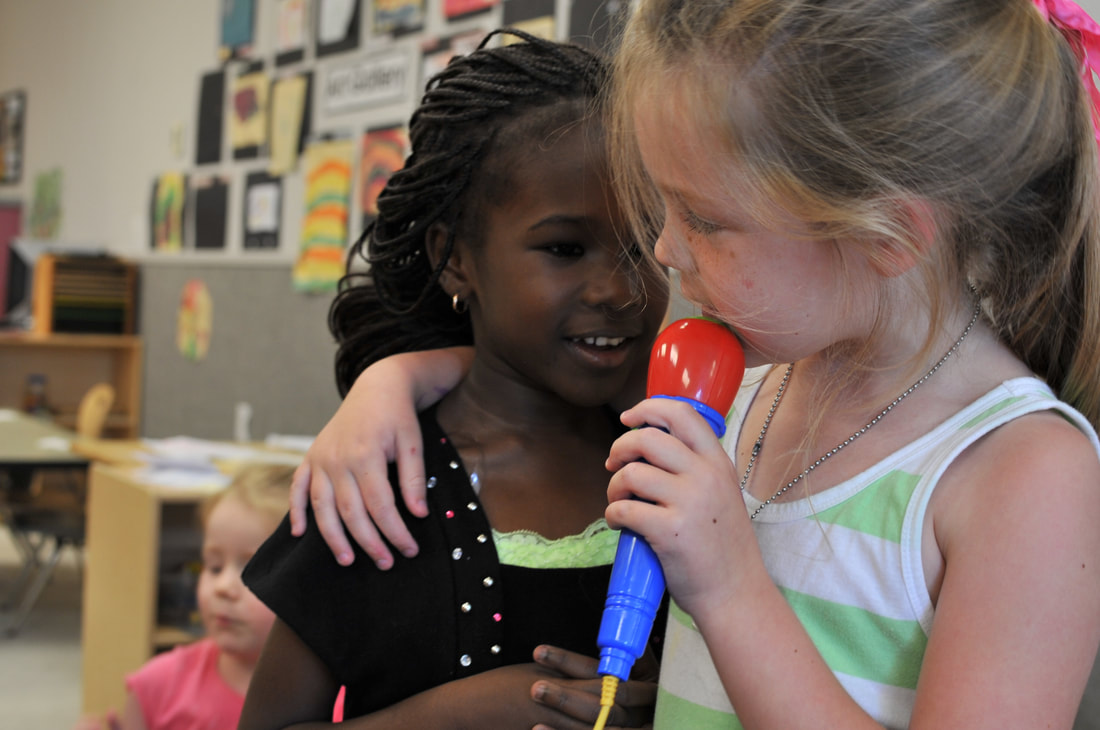 I missed the Florida Georgia Line concert in Youngstown a few weeks ago. Feeling bummed, I started wondering if I was really experiencing FOMO, or this was something new. Never heard of FOMO? It’s the acronym we use for the “fear of missing out,” a fairly common term for describing our feelings of anxiety when we might miss an opportunity for social interaction or a unique experience. The term FOMO was added to the Oxford Dictionary in 2013. But that wasn’t what I was feeling. There was no fear of missing out because, well, I was already missing out. This was something different. It was envy. I was envious of missing out on the experiences my friends were having. I call it EOMO or “envious of missing out.” Yes, Oxford Dictionary editors. You have my permission to use this in your 2019 edition. Okay, maybe EOMO isn’t as catchy FOMO. Say EOMO three times fast. It doesn’t roll off the tongue as nicely as FOMO. But the envy we feel about seeing our friends’ experiences play out on social media are real, feelings that conjure regret, frustration and negativity. According to a study published in the August issue of Computers in Human Behavior, researchers Ruoyun Lin, Niels van de Ven and Sonja Utz found that Facebook users tend to be more envious of friends who post updates about experiential purchases (e.g., big vacations) more than material purchases (e.g., sports cars). Lin’s team noted that if we see posts from friends that make us envious, we might become frustrated. It can ultimately damage our relationships as we become more negative toward those we envy. On the flip side, seeing those posts may motivate us to make our lives a little better. We might go out and make big purchases, and subsequently brag about those purchases on social media. While it’s important to know “what” kinds of posts elicit these emotions, it’s just as important to know “why.” Turns out that posts about experiences are more relevant to us than big, fancy material purchases. We’re more envious of posts made by friends who attend big events than those who post about buying new homes. In reality, we actually see fewer posts about those material purchases. As Lin’s team noted, we prefer to see posts about experiential purchases even if they do elicit feelings of envy. This is also true for those who post about their experiences. We believe we’re giving our friends the information they want. For example, those who post about their purchases believe their friends would much rather read about those experiences – such as attending a big concert in Youngstown – than a new car. They’re right. I might have been feeling EOMO on that concert, but I was happy for my friends and motivated to attend that big concert next year.
0 Comments
 Facebook celebrated the one-year anniversary of its birthday fundraiser feature last week with a big announcement. During the first year, Facebook users raised more than $300 million for causes they care about using the birthday feature. If you missed doing this for your own birthday, here’s how it works. Two weeks before your birthday, Facebook will begin posting messages in your Feed with an option for creating a fundraiser. You might recall seeing notifications from your friends who initiated this feature, with invitations for you to support their causes on their special day. The list of causes to support on Facebook is seemingly endless. You can pick from one of 750-thousand nonprofits based in the U.S. available for fundraising on Facebook. According to Facebook, many users expressed an interest in wanting to dedicate their birthdays to a good cause, but those users also expressed some frustration in choosing from the enormous list of available nonprofits on the platform. “To make this easier, we will soon provide more information: when you click on a nonprofit in the list, you can learn more about the organization, their mission, location and how many people like their Page,” said Asha Sharma, Facebook’s Head of Product for Social Good. “We also plan to share more relevant information, like popular search terms in the nonprofit selection tool.” Top beneficiaries of birthday fundraisers for the inaugural year included an eclectic, well known collection of non-profit organizations: St. Jude, Alzheimer’s Association, the American Cancer Society, Share Our Strength – No Kid Hungry, ASPCA. Sure, it’s a feel-good Facebook feature that takes very little work on our part to launch, but it could generate some much-needed funds for other, lesser-known organizations. It could also have an unintended outcome: leading your friends to learn more about those smaller nonprofits. According to Sharma, celebrities are leveraging the Facebook birthday feature to mobilize their fans. For example, NBA star Stephen Curry, raised over $82,000 during his 30th birthday for Nothing But Nets to help combat childhood malaria. Madonna used her 60th birthday to generate funds for Raising Malawi’s work at Home of Hope orphanage located in a rural, high-need area of Malawi. “Based on feedback from the community, we added new tools to nonprofit fundraisers, like the ability to match donations and add organizers to your fundraiser,” Sharma added. For example, if you’re a Facebook “Page” administrator – including Pages run by brands, public figures, and nonprofits – you can now create and donate to fundraisers. “And we added a tool so people can make recurring monthly donations to the organizations and causes that are important to them,” Sharma said. One of the best parts of the fundraising feature? Facebook started waiving fees in November 2017, so that 100 percent of all donations go directly to the nonprofits we’re supporting.  “It knows you’re here,” a trainer recently told me in front of a group of educators, my name and image now displayed on the massive screen before us. “And it can hear you,” the trainer added with a creepy emphasis. Of course, he was trying to be creepy. He knew how disturbing it sounded. We all gave uncomfortable chuckles. “Why not just add an evil genius laugh to go along with it,” someone added from the back of the room. “Look, I know this sounds weird, but it only works in this classroom,” our fearless trainer trudged on, trying to dull our privacy and security concerns, with limited success. As I later confirmed with the other educators, we weren’t just concerned for our own privacy, we were concerned for our students. “Who’s to say someone can’t just get into this system, and get into a student’s device, and share...” another concerned educator asked from the back of the room. I left off the end of her query on purpose because, quite frankly, it doesn’t matter what content on the “device” a “hacker” would “share.” “Sounds like the birth of Skynet,” another educator added, referencing the artificial intelligence system that all but destroys humankind in the “Terminator” movie franchise. These aren’t new fears, of course. Mention these concerns to any tech giant and they’ll simply brush them off as the public relations price of doing business. Just this past week, fears over Google’s location tracking services surfaced following an in-depth AP investigation. Here’s what we thought: Don’t want Google to track your every movement? Simply turn off your location data, right? Wrong. It so happens that Google is recording your movements even when you tell it not to, even when you whittle down through all of the security protocols on your device to find “location services” and turn it off. It’s still on. Well, sort of. What the AP investigation found was that some services continue to store your locations even after you’ve set the privacy settings to forbid Google and other apps on your device from doing so. We know when we want Google to track our movements. Google Maps is a good example. If you’ve turned off location services, and then open their Maps app, you’ll be prompted share location data. Google will tell you that Maps simply won’t work as well with location data turned off. This is a purposeful action we take. We’re telling Google “it’s ok to track my movements.” It’s the stuff Google and other services are tracking without our permission that’s not ok. We like the ease-of-use these apps provide. But it shouldn’t stop us from being vigilant in protecting our privacy, whether we’re in a classroom or trying to make our way around town. Who knows? Maybe that vigilance will help us stave off a future Skynet attack.  Growing up in Brackenridge, Pa., in the 1970s, I had a few, close neighborhood friends. Our small steel town sits on the banks of the mighty Allegheny River, just north of Pittsburgh. Yes, it still has a functioning steel mill. In fact, Brackenridge was, and in many ways still is, bustling with a blue-collar work ethic, a value that was hammered into us by family, friends and our surroundings. Those few neighborhood friends and I swore we’d be best friends forever. We had so much in common: strangely dysfunctional home lives, fathers who worked in steel mills and related industries, and a fascination for what life must be like in faraway cities – like Pittsburgh. Like most friends back then, we weren’t best friends forever. We moved on and lost touch, promises of life-long friendships evaporated by time and distance. We wrote letters, but not often, and only when we could find envelopes and money for stamps. We made phone calls, but only when our parents gave the okay to incur long-distance charges. We valued work and friendship, but we didn’t really know how to work at maintaining those friendships without easily accessible communication tools. That all changed in the last decade. The tools we have for staying connected with close friends are built to help us get around those pesky time and distance problems. So, when I learned a few weeks ago that our good friends would be leaving Youngstown for a parent’s new job in Texas, I panicked, if only for a moment. Our families are closely connected, our daughters linked perfectly in terms of ages and interests. They’re BFFs (i.e., best friends forever). Last night was the final play date for a while. Maybe forever. I was prepared with tissues and hugs for what certainly would be an evening of weeping and tears. But the tears never came. Sure, I was thinking back to my childhood friendships that vanished over time, reflecting on how sad I was in the moments when friends moved away. Then I reconsidered how connected we are because of technology. In fact, I argue that my children are probably better connected to their BFFs than I am to my batch of friends. They connect with distant friends everyday on apps like Amino and Instagram, games like Animal Jam and Roblox, on tablets and smartphones. They talk, collaborate and play. They know how to connect with others, and they put in the work to learn new apps because they value those friendships. In the ’70s, I learned that staying connected with friends took a lot of work. But today I’m glad to see my kids reap the rewards for the work they do to learn and use those technologies to stay connected to their buddies – their BFFs.  Allen Gannett, CEO, TrackMaven Allen Gannett, CEO, TrackMaven DOYO Live, Youngstown’s digital marketing and interactive design conference, is back for year three, and the lineup of sessions and workshops led by industry professionals from around the country continues to impress. Case in point: keynote speaker Allen Gannett, CEO of TrackMaven. I caught up with Gannett this week to learn more about TrackMaven, his new book, and his advice for Youngstown’s DOYO Live audience. Gannett’s company, TrackMaven, is a marketing insights platform. Think of marketing insights like this: Home Depot needs to reach customers through their ads and other marketing strategies. They do this through social media and other platforms. TrackMaven steps in and “tracks” those ads and marketing campaigns, offering insights on the success of those strategies. “A lot of big brands use us to figure out the stories and patterns in their marketing data – what should those companies do more of and less of,” Gannett explained. In essence, TrackMaven tells those big brands if anyone is listening to those stories. Telling stories for a company of any size often takes a little (and sometimes a lot) of creativity. While TrackMaven is delivering insights on marketing campaigns, Gannett – in his book “The Creative Curve” – is providing insights on the path to creativity. Here’s the catch: His advice isn’t just for the creative minds at those big companies. “Creativity is most valuable in industries that are typically not creative,” Gannett said. “If you’re in financial services or insurance, remember that’s where creativity can be a big differentiator.” Gannett explained that it’s great to be creative at Google, but everyone’s creative at Google. “Where it’s valuable to be creative is in insurance or bank marketing,” Gannett said. “There’s a huge delta opportunity there.” “The Creative Curve” has received high praise from other creative thinkers. “It’s been cool to see that people from a wide variety of creative fields have had a positive impact from the book,” Gannett added. “Fine artists said [“The Creative Curve”] has really been a way to add some fidelity to their thinking around creativity, but I’ve also had marketers who have said it’s helping them in their campaigns.” One of the biggest challenges we face is the dreaded creative slump. But Gannett has a solution. Rather than brute forcing your way into productivity, he says to focus on consuming more raw materials. “Your brain is really good at coming up with new ideas if it has these raw materials to work with,” Gannett explained. “Great creative achievers spend a lot of time consuming materials in their creative niche. They take those materials, gnaw on them and come up with new ideas.” “You need dots to connect if you’re going to connect the dots.” DOYO Live workshops were held August 1, and a full slate of sessions – including Gannett’s keynote – were held August 2 at the DeYor Performing Arts Center. |
AuthorDr. Adam C. Earnheardt is special assistant to the provost and professor of communication in the department of communication at Youngstown State University in Youngstown, OH, USA where he also directs the graduate program in professional communication. He researches and writes on a variety of topics including communication technologies, relationships, and sports (with an emphasis on fandom). His work has appeared in Mahoning Matters as well as The Vindicator and Tribune-Chronicle newspapers. CategoriesArchives
July 2023
|
 RSS Feed
RSS Feed